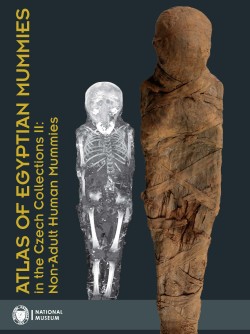Popis
Ancient Egyptian mummies and their funerary equipment are an invaluable source of information not only on the Egyptians’ perception of death, but more importantly on their lives – diseases and traumas they suffered from, activities they carried out, their family relations, and more.
The present volume, second in the series of Atlas of Egyptian Mummies in the Czech Collections, is dedicated to mummies and funerary containers of non-adults aged 15 and younger. Two complete mummies, twelve isolated parts from ten individuals, and six funerary containers were introduced in a detailed catalogue, along with their respective provenances, and brief excursions into the health and disease of ancient Egyptian children, and their funerary
treatment.
The studied material came from the collections of two divisions of the National Museum in Prague, namely the Náprstek Museum of Asian, African and American Cultures, and the Natural History Museum. The mummies were examined using non-invasive methods, and the results were compared to those published in the past.
The containers, two boxes, two hampers, and two jars represent only a small part of typological repertoire of containers used for the deposition of burials of non-adult individuals.
While the non-adult mummies and their isolated parts are without provenience, all of the six containers come from modern excavations at well-documented cemeteries at Deir el-Medina and Abusir. Examination by non-invasive methods, especially computed tomography, brought to light several findings including one possible case of traumatic death, and one possible case of rickets. Information on the use of mummification substances and techniques – including the reinforcement of spine – were also reported.

